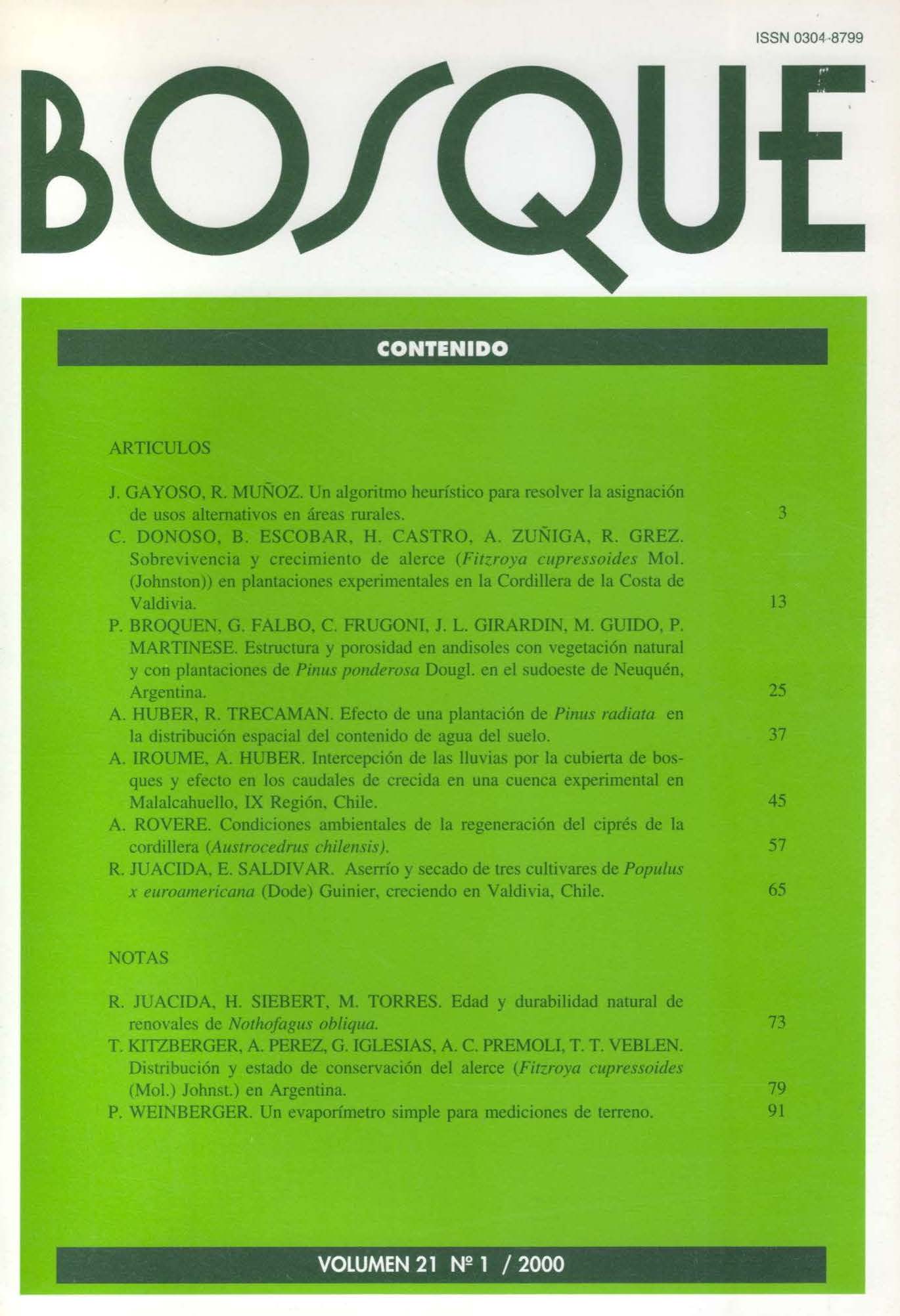Effect of a Pinus radiata plantation on the spatial distribution of soil water content
Main Article Content
Abstract
The effect of a 15-year-old Pinus radiata plantation, with a density of 460 trees/ha, on spatial and temporal soil water content was determined in the area of Collipulli, IX Region of Chile Precipitation, interception loss, temporal and spatial variation of the soil-water-content and the spatial distribution of active roots up to a depth of three meters were measured. The results were compared with those from a natural Agrostis-Holcus meadow in the same area. The total amount of active roots was 37.2 t/ha of dry matter for Pinus radiata and 9.5 t/ha for the meadow. Most roots were found in the first 50 cm of soil for both sites. Horizontal distribution of the roots was more homogeneous in the meadow, whereas in the forest a higher concentration of roots was found near the trees. The maximum depth reached by roots in the forest was 2.5 m, whereas in the meadow they reached only 1.1 m. In the forest plantation, the horizontal distribution of the soil water content was more uneven, as a result of the canopy interception and the heterogeneous distribution of the roots. The evapotranspiration effect on the soil water content exceeded 3 m of depth under the forest, but in contrast, was up to 150 cm in the meadow.

